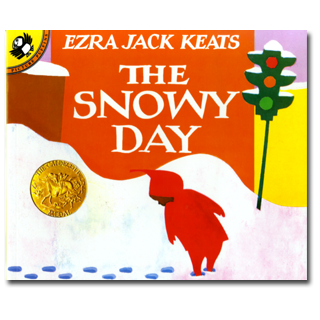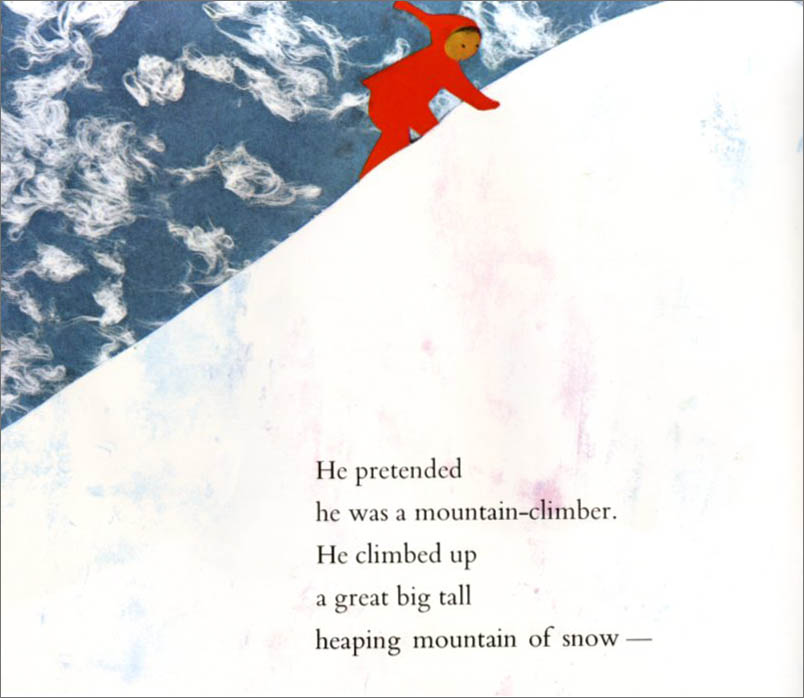
A FEW OTHER EVENTS FOR
MARCH 15:
- Happy birthday Sarah Sargent (Between Two Worlds), Robert Nye (Beowulf: A New Telling), Ruth White (Belle Prater’s Boy), Adèle Geras (Time for Ballet), and Mary K. Pershall (Two Weeks in Grade Six)..
- It’s the birth date of Maureen Daly (1921–2006), Seventeenth Summer, and Barbara Cohen (1932–1992), Molly’s Pilgrim.
- “Beware the ides of March,” wrote William Shakespeare. Roman dictator Julius Caesar was assassinated on this day in 44 BC. Read Julius Caesar: Dictator for Life by Denise Rinaldo.
- Happy birthday Maine, which becomes a state in 1820. Read One Morning in Maine by Robert McCloskey.
- It’s Napping Day, created to help people adjust to daylight savings. For our dogs and cats, every day is napping day.
In 1963 when Madeline L’Engle’s A Wrinkle in Time won the Newbery Award, an artist who had struggled a long time to find his voice received the Caldecott Medal. Born in Brooklyn, Ezra Jack Keats was the son of Polish immigrants. Although his mother encouraged him to create art, something he delighted in doing, his father admonished him against such a career. “Never be an artist; you’ll be a bum; you’ll starve; you’ll have a terrible life.” But Keats persisted in his dream.
With money given to him by his brother, Keats spent a year in Paris and came back ready to work as an illustrator. His career began inauspiciously enough—jackets for adult books, interior art for children’s books, all of it workmanlike. Keats himself always maintained that had he died before 1962 he would simply have been viewed as a hack illustrator, doing work for hire. Although this judgment is a bit harsh, it is true that until Keats had a chance to choose his own subject matter for a book, he remained emotionally unengaged from the process.
When Annis Duff asked Keats to write and illustrate his first solo book, he turned to a subject matter dear to him: the children who were playing on the streets of Brooklyn where he lived. In the “all white world of children’s books” their faces were not being reflected at all. Keats had saved a photograph of a black boy in his studio for years and used that picture as the model for Peter in The Snowy Day. A young boy, Peter dons a red snowsuit and explores his neighborhood during a magical snowfall. He makes snow angels, tracks his feet in the snow, and slides down a mountain of snow.
To illustrate the book, Keats used collage, because of the freedom it provided. He located a piece of Belgian canvas that he turned into bed linen, and to produce the image of a wall, he spattered India ink with a toothbrush. The artwork’s simplicity invites readers to enter into each picture with their own imagination. Many children have interpreted the white space below Peter’s sleeping face when he goes to bed as the snowball Peter created that day.
After the book won the Caldecott Medal in 1963, it was purchased for library collections throughout the country, and for a period of years The Snowy Day was often the only book to show the face of a person of color in many public and school libraries. Hence it had a profound influence on thousands of children who for the first time could see themselves in a book. National Book Award Winner Sherman Alexie in Everything I Need to Know I Learned from a Children’s Book talked about encountering this book in the library on his Spokane Indian Reservation: “I vividly remember the first day I pulled that book off the shelf. It was the first time I looked at a book and saw a brown, black, beige character—a character who resembled me physically and spiritually, in all his gorgeous loneliness and splendid isolation.”
By creating a successful book with a Black protagonist, Ezra Jack Keats encouraged others to publish multicultural books. Both he and the brave Newbery-Caldecott committee of 1963 changed the contents of children’s books forever.
Here’s a page from The Snowy Day:

Originally posted March 15, 2011. Updated for .













One my all time favorite books! The Snowy Day is a mentor text I return to again and again in my first grade writers workshop. This book so clearly shows kids how to zoom in on details to create a sensory experience for the reader. So brilliant!
The Snowy Day was one of the first books I read as a child; I was three when it was published. I read it with both my children when they were young, and it’s one of only a few of their books that I’ve kept on my bookshelves–long after they’ve outgrown it.
My children, born in 1974 and 1977 loved this book. We still have the copy they cherished, and their own children have read their new copies over and over. It is a favorite choice when they give gifts to friends. The best thing — two winters ago we had a BIG snow. I took my then 3 1/2 year old granddaughter out to play in the snow. After being outside a short while, I realized she was purposefully re-enacting Peter’s adventures in the snow, persisting even until she located a big stick, and used it to whack a tree!
This is one of my favorite picturebooks of all time, and I’m so glad I’ve had the opportunity to study it in detail and to study Keats’s life. From reading the biographies of Keats, one thing I realized was the sensitivity of Keats’s interior self. This sensitivity comes out in Peter’s character in The Snowy Day. As he quietly observes and experiments with the world around him, he gently opens up that world to the child reader. This book came out when my mother was a child, and she passed it on to me, and I have every intention of passing it on to my children. I will never grow tired of this book. Thanks so much for the post!
I’m with Kate, I was fascinated to learn about Keats’ life! I was also really surprised (although maybe I shouldn’t be) to learn about all the race issues surrounding the book. Why should it be a social commentary? It’s a book, one that helped open the door in terms of race for other books, but the point isn’t race so much as a child having fun! That’s what makes this book so engaging. Frankly, in terms of aesthetic, too, I think a darker skinned character stands out beautifully against the snow, as does the red he wears. From an artistic standpoint, the choice makes so much sense!
Thanks for sharing this one, Anita!
I’ve always liked the illustrations in this book but didn’t know the history behind it. It’s striking how simple ideas, thoughts, sensitivity can make a large impact.
The Snowy Day — the power of simplicity.
🙂
Thanks for all the wonderful comments on The Snowy Day. Susan Hirschman, who served as Keats’s editor for many books, once told me that he never tired of listening to people talk about how much they loved his books. He treated each positive statement as if he had never heard one like it before.
I hope this cyberspace enthusiasm for The Snowy Day reaches him somehow.
Ezra Keats books are so colorful and fun to read. It really captures childrens’ interests and makes them want to know what will happen next. Absolutely amazing, if you are able to read more of Keats, please do so. Your children will thank you immensely. The illustrations helpl tell the story as well.
If poetry is the sound of language organized in lines, then color is the feel of language painted within those lines. Who can forget the notes Keats plucked in our hearts when we saw beautiful brown against blinding white cloaked in shocking red? And those tracks in the snow… the notion that every child can leave his mark on the world. True art!
I love Ezra Jack Keats. This was the book for Jumpstart’s Read for the Record. I posted on this here: http://www.pragmaticmom.com/?p=11134
A wonderful book, I’ve always loved the simplicity of it.
My 3year old has borrowed The Snowy Day three times in a row from the library. I should buy our own copy, but I love the old tattered copy!
This is one of my two-year-old nephew’s absolue favorites. He was too young to remember snow this winter (from last winter), but the first thing he said when he went outside after a storm was “make a snowball!” because of this book.
I am not sure I can say anything about this book that everyone else hasn’t already said. Like Tess, I , I think a darker skinned character stands out beautifully against the snow. For anyone who is interested, the Eric Carle Museum will be doing an exhibition of this book’s art this June.
For me, this is one of the all-time perfect picture books.